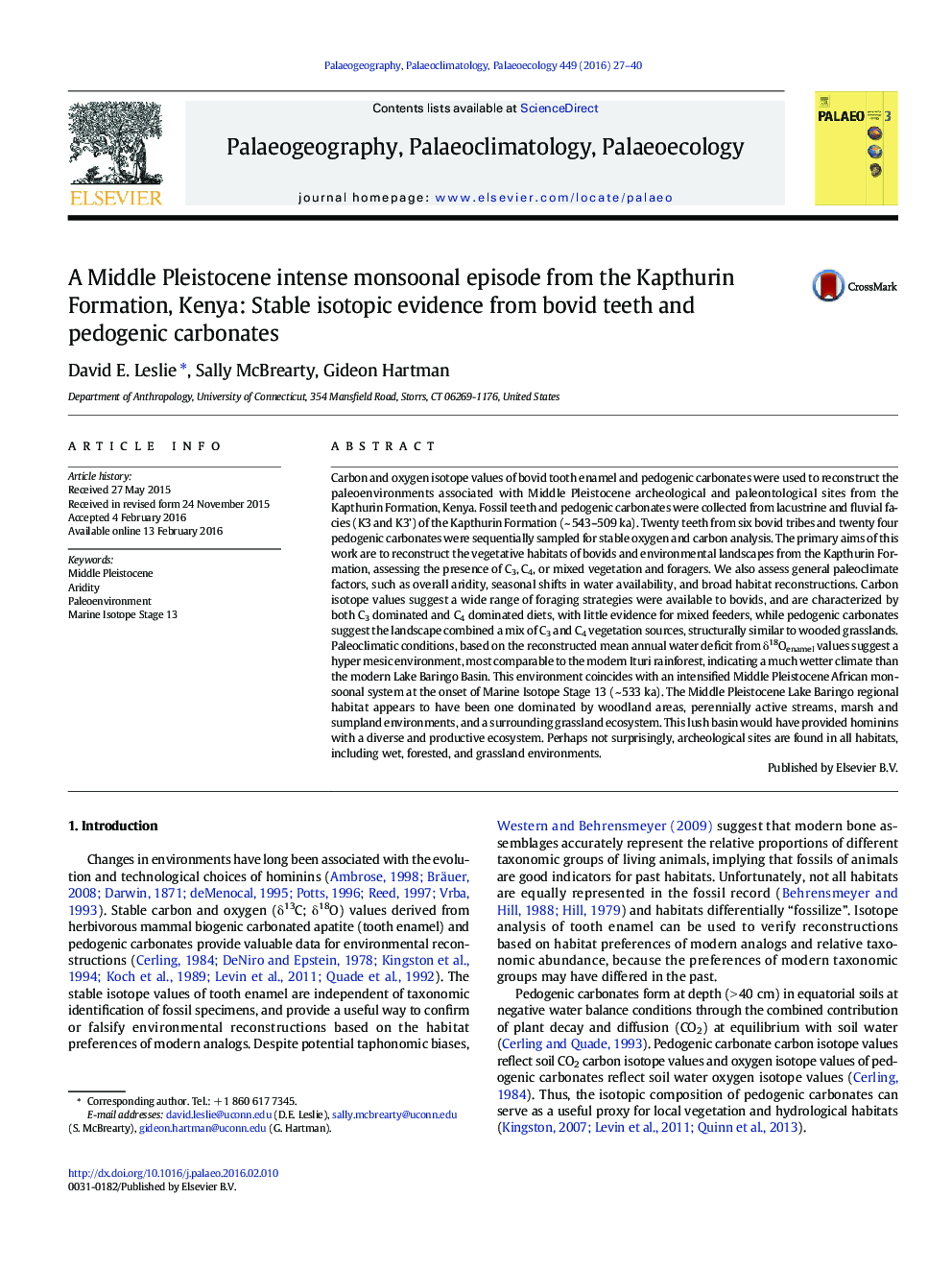| کد مقاله | کد نشریه | سال انتشار | مقاله انگلیسی | نسخه تمام متن |
|---|---|---|---|---|
| 4465747 | 1622142 | 2016 | 14 صفحه PDF | دانلود رایگان |
• Paleoclimate predictions suggest Marine Isotope Stage (MIS) 13 is characterized by an intense African monsoonal episode.
• Carbon isotopic ratios (δ13C) from bovid tooth enamel and pedogenic carbonates determine paleovegetation during MIS 13 for the Kapthurin Formation, Kenya.
• Oxygen isotopic ratios (δ18O) from bovid tooth enamel and pedogenic carbonates determine aridity during MIS 13 for the Kapthurin Formation, Kenya.
• Riparian woodlands, wooded grasslands, and grassland ecosystems are reconstructed, with mesic conditions.
• The presence of an intense African monsoonal episode is likely during MIS 13.
Carbon and oxygen isotope values of bovid tooth enamel and pedogenic carbonates were used to reconstruct the paleoenvironments associated with Middle Pleistocene archeological and paleontological sites from the Kapthurin Formation, Kenya. Fossil teeth and pedogenic carbonates were collected from lacustrine and fluvial facies (K3 and K3’) of the Kapthurin Formation (~ 543–509 ka). Twenty teeth from six bovid tribes and twenty four pedogenic carbonates were sequentially sampled for stable oxygen and carbon analysis. The primary aims of this work are to reconstruct the vegetative habitats of bovids and environmental landscapes from the Kapthurin Formation, assessing the presence of C3, C4, or mixed vegetation and foragers. We also assess general paleoclimate factors, such as overall aridity, seasonal shifts in water availability, and broad habitat reconstructions. Carbon isotope values suggest a wide range of foraging strategies were available to bovids, and are characterized by both C3 dominated and C4 dominated diets, with little evidence for mixed feeders, while pedogenic carbonates suggest the landscape combined a mix of C3 and C4 vegetation sources, structurally similar to wooded grasslands. Paleoclimatic conditions, based on the reconstructed mean annual water deficit from δ18Oenamel values suggest a hyper mesic environment, most comparable to the modern Ituri rainforest, indicating a much wetter climate than the modern Lake Baringo Basin. This environment coincides with an intensified Middle Pleistocene African monsoonal system at the onset of Marine Isotope Stage 13 (~ 533 ka). The Middle Pleistocene Lake Baringo regional habitat appears to have been one dominated by woodland areas, perennially active streams, marsh and sumpland environments, and a surrounding grassland ecosystem. This lush basin would have provided hominins with a diverse and productive ecosystem. Perhaps not surprisingly, archeological sites are found in all habitats, including wet, forested, and grassland environments.
Journal: Palaeogeography, Palaeoclimatology, Palaeoecology - Volume 449, 1 May 2016, Pages 27–40
